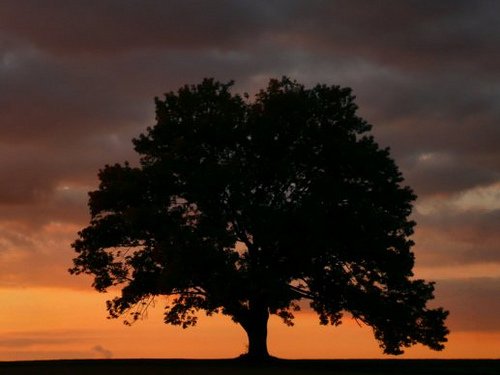
By Robert P. Poindexter
Stop reading this post and head outside. When you get there, find the most majestic tree you can and take a long close look at it. Don’t just glance at it. Study it closely and take in the very essence of its stately features and magnificent presence. Take notice of each branch, from the massive low branches to the newest sprigs near the top.
Go ahead, and take your time. I’ll be here when you get back.
Do-dee-dum-do-dee-dum-dum
Oh good, you’re back.
With the image of the tree you just studied still fresh in your mind, think back to the very first time you ever rendered your own iteration of a tree. You were probably somewhere around age five, maybe four if you were exceptionally gifted. I was closer to 12, but that’s a story for another time.
If you are honest, you will agree that your drawing and an actual tree had little in common. Certainly you drew a vertical tube-like feature that represented the trunk. And there is little doubt that above this tube you drew a large round ball using squiggly lines that represented the limbs and leaves.
This drawing would be easily recognizable, by your mom and cavemen, as a tree. Of that there can be little doubt.
Now compare that artwork to that of an accomplished artist. Not one of those post-modern impressionist types that have to explain their painting, I’d rather have a four-year-old’s picture of a tree than that. I mean someone who is able to truly represent recognizable objects and bring them to life on canvas. Things like trees, for example.
These artist have the ability to bring one thing to their artwork that those of us without such gifted hand/eye coordination can never hope to achieve. And that thing is called the third dimension.
This dimension fills in the blanks that two-dimensional drawings leave empty. And even though two-dimensional renderings portray the object and make them recognizable, they are flat, boring and without much substance.
The same can be said of two-dimensional resumes. They resemble a resume, and a caveman would recognize them as such if one were written on his cave wall, but they are lifeless and without the depth required to garner any real interest.
If you are currently using one of these two-dimensional resumes, I urge you to reach out to an artist/resume writer to help bring that all-important third dimension to your career document. And while your mom and cavemen may appreciate it, it is the art critic/hiring manager who you should really be trying to impress.
Your new environment and those Texas trees agree with you! I already see and sense a difference in your writing.
Speaking of drawing, there’s a wonderful exercise in Drawing from the Right Side of the Brain that asks you to turn the image upside down and then draw it. What this does is to short-circuit the smarty-pants left side of the brain that has pre-conceived notions of what a tree or a nose or whatever looks like.
I think the same applies to one’s out-dated beliefs about what a resume looks like, don’t you? Of course, I don’t advocate turning it upside down to work on it, but certainly mixing things up from the “usual” helps to make new connections (pun intended).
Thank you so much, Marianna. I am definitely going to try the upside down drawing exercise. I’ll let you know if it makes any difference. I appreciate your taking the time to read and leave such a great comment.
Cheers
Rob
I loved this post, Rob!
Having just stick drawn a tree (the extent of my talents in that arena) for a family board game over the Memorial weekend, I knew what that was like.
Took your advice and went outside to our lake-front property. Picked a Birch to eye up and down.
In short, your analogy is so insightful! Recognition is not art; one dimensional is not two dimensional. Storytelling and marketing are not dry facts or job descriptions.
Loved this exercise and lesson!
Thanks for actually going out and looking at a tree. I was looking at a mature cedar when I wrote this post and I sincerely hoped someone would do exactly what you did before reading the rest of the story.
Since you looked at a birch, let’s throw down the gauntlet and see what other types of trees people looked at.
Everyone follow Barbs lead and report back with where you are and what kind of tree you looked at.
This could be fun. Thanks Barb.
Cheers
Rob